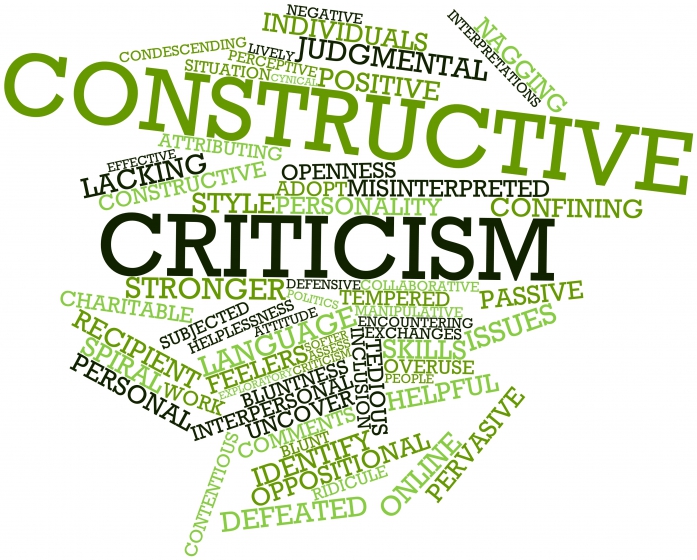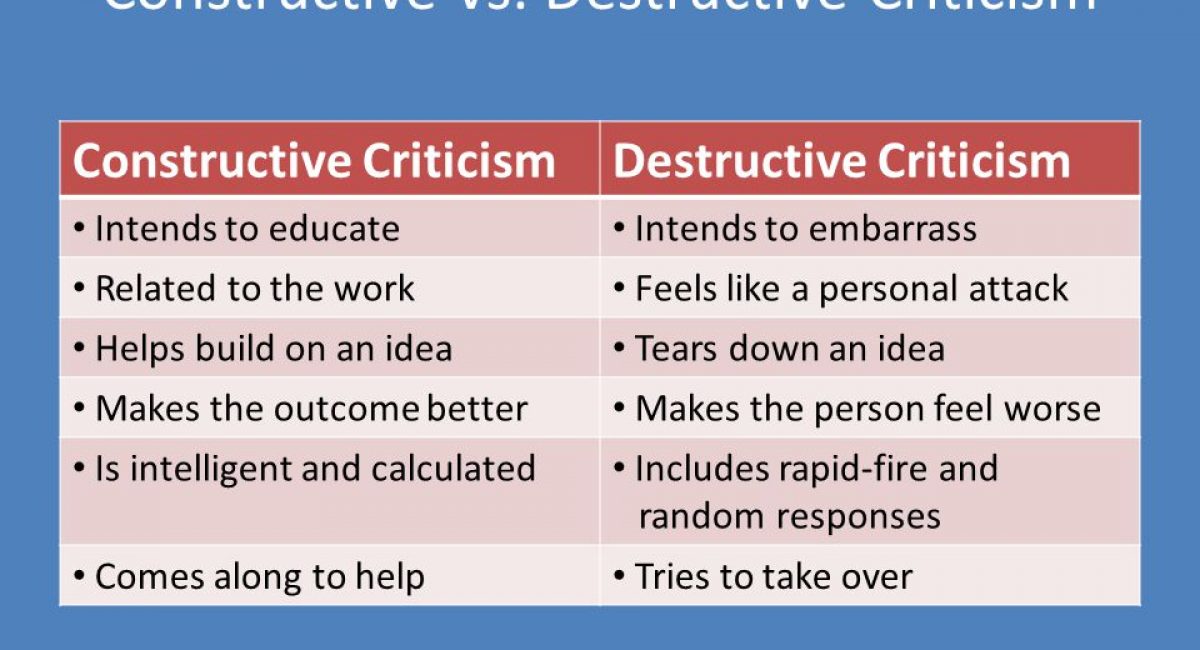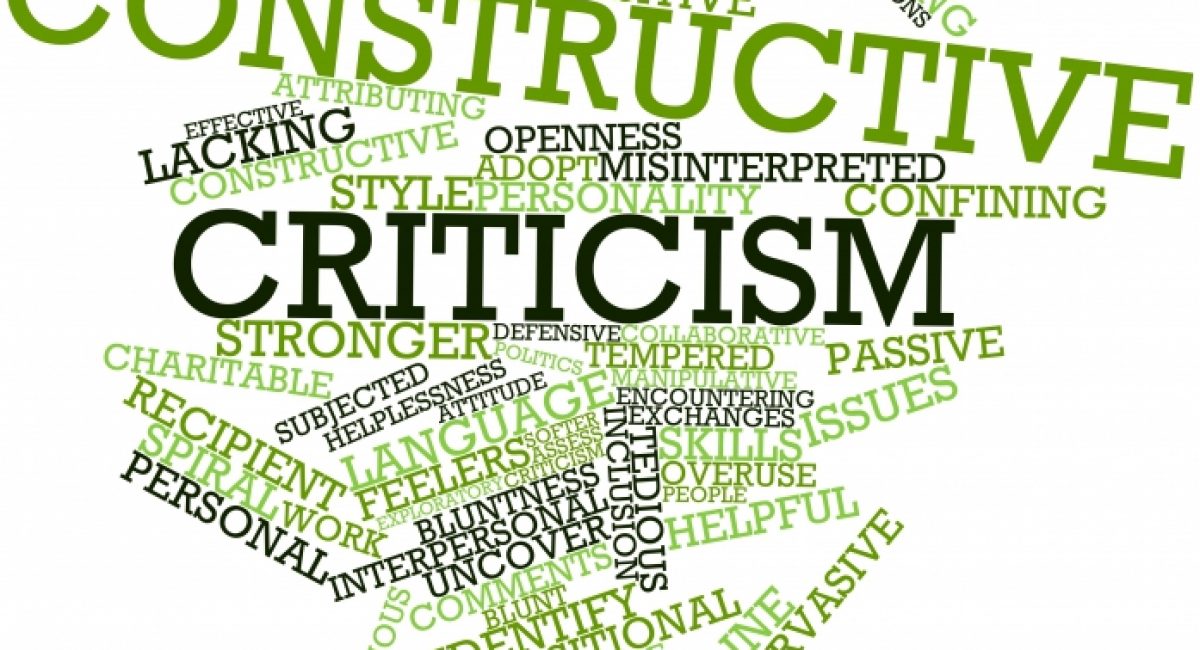
CLS- Constructive Criticism?
By Dr. Nancy Sutton Pierce
Tune In Saturdays 11a-12n (PT) KCNR1460.com
Waking up to your life!
You Hosts today are
Dr. Nancy Sutton Pierce & Dr. Mark Pierce
Today’s Topic: Constructive Criticism or is it Destructive Criticism?
Segment 1
- What is constructive Criticism?
- Who feels entitled to give it?
- How often is it received well?
- What is behind, beneath it?
- A COMPLAINT IS NOT CONSTRUCTIVE CRITICISM
- If it starts out as a Criticism, it has lost the constructive edge.
- Constructive criticism aims to show that an intent or purpose of something is better served by an alternative approach.
- CC is better received by someone you respect
- You will be heard more often when you draw attention to how an identified problem could be solved, or how it could be solved better. Constructive criticism is more likely accepted if the criticism is timely, clear, specific, detailed and actionable.
- Destructive Criticism VS Constructive: destructive criticism is regarded as an undesirable nuisance, a threat, or as completely unjustifiable, especially if it involves personal attacks on people.
- The difference between constructive criticism and destructive criticism is the way in which comments are delivered. Although both forms are challenging your ideas, character or ability, when someone is giving destructive criticism it can hurt your pride and have negative effects on your self-esteem and confidence.
Destructive criticism aims to destroy the target of criticism, by making the destructive criticism (e.g., “You should shut up and follow the program.”). The aim is to show that the point of view of someone else has no validity at all, or lacks any merit.
In some contexts, destructive criticism is regarded as an undesirable nuisance, a threat, or as completely unjustifiable, especially if it involves personal attacks on people. Destructive criticism is often criticized because it has a destructive effect, instead of a positive effect (this may also just be an accusation or allegation, if there is no proof that the effect actually is destructive).
However, in political and military contexts, destructive criticisms may be essential to save resources, or to save lives among one’s own group. An idea in itself is not dangerous, but an idea proposed in a particular context can be very dangerous, so that people feel that it should be disarmed by mercilessly criticizing it. The ultimate destructive criticism occurs when people and property are physically destroyed.
The term “destructive criticism” is also used to mean that the level, scope or intensity of criticism is such, that it becomes mainly destructive. In this context, people believe that the criticism is so great, or there is so much criticism, that it only destroys things. For example, a debate or controversy can get out of control, so that everybody is at war with everybody else, and everybody is opposed to everybody else. In that case, it may well be that the criticism is being overdone (“overkill”). What started out as a structured dialogue to identify conflicting aspects of a situation, ends up as a chaos in which nobody can agree with anyone else anymore.
Destructive criticism from parents and other authority figures causes psychological harm to children that results in lower levels of self-esteem, social acceptance, scholastic competence, behavioral conduct, global self-worth and generally poorer self-perceptions. This is a significant issue. In this study of 144 children from a middle class environment, only six children (4%) reported that they had never been subject to physical punishment or the target of rejecting, demeaning, terrorizing, destructively criticizing or insulting statements. Some parents may ask how do you correct a child who is misbehaving if you do not criticize.
Both negative and constructive criticism have their appropriate uses, but often it is considered a requirement of criticism that they are combined. Thus, it is often considered that those who find fault with something should also offer an option for putting it right. More generally, any rule for behavior of any kind usually implies both “do’s” and “don’t s”. Doing something usually also implies not doing something else, and, not doing something, often implies doing something else. There is therefore a conscious choice “to do this, or do that”, but not both at the same time.
So, to orient behavior, people need to know both what is “ruled in” and what is “ruled out”. If the criticism concerns only one aspect, but not the other, it may supply only incomplete information, which is not adequate to orient behavior or guide action. One of the most elementary reasons why a rule is ignored, flouted or subverted is, because either the positive or the negative aspect of what it means is unspecified.
Segment 2.
- Constructive Criticism is when instead of telling an employee what they did wrong, you tell them what they can do better next time,” said the workshop leader.
A workshop participant asked a question. “What if the employee doesn’t listen to my feedback?” he asked.
“Then you may have to give the same feedback again, in a different way,” said the instructor. “You can try different ways to give the same feedback until the employee listens to it and acts on it.”
My 22-year-old brain recoiled. I wondered “Why is leadership training always about telling employees something, instead of asking them what they think?”
If someone doesn’t listen to you, why would you try to tell them the same thing again in a different way? Wouldn’t you ask them instead “Does my feedback sound right to you? Maybe I am wrong. What’s your opinion?”
Asking employees for their opinions about your feedback was not part of the traditional management playbook back then.
Feedback that is well-received and easily acted upon is feedback that comes from a person you trust. It’s that simple.
Segment 3. Switching Gears – Sandra Jennings calls in to share about the upcoming Psychic Fair on July 22 at the Conscious Living Yoga Studio at 1325 Tehama St, Redding, Ca 10a-3pm. Call Sandra for more information (530) 410-3702
Segment 4.
Ahimsa & Satya and how these Yama’s fit into today’s topic.
“We are all responsible for designing our lives and relationships. Once we connect to our heart’s desire, we are better equipped to do just that!” – Dr. Nancy Sutton Pierce
Please Leave Comments Below…





Future Shows: If you have an idea or would like to be a guest on my show email me from my website nancysuttonpierce.com and we’ll make a date! I am still seeking sponsors so contact me if you believe your product or company is like-minded with the Conscious Living Movement.
If your business is in the area of “Conscious Living” and you would like us to mutually support each other, please Contact Me Directly. Lets help each other make this world an even better place for our grandchildren and beyond!
Thank you for your support – I love to know what you are thinking – Please leave your comments below. I read every one!
DON’T MISS ANY OF THE CONSCIOUS LIVING SHOWS … SUBSCRIBE TODAY!








Add A Comment